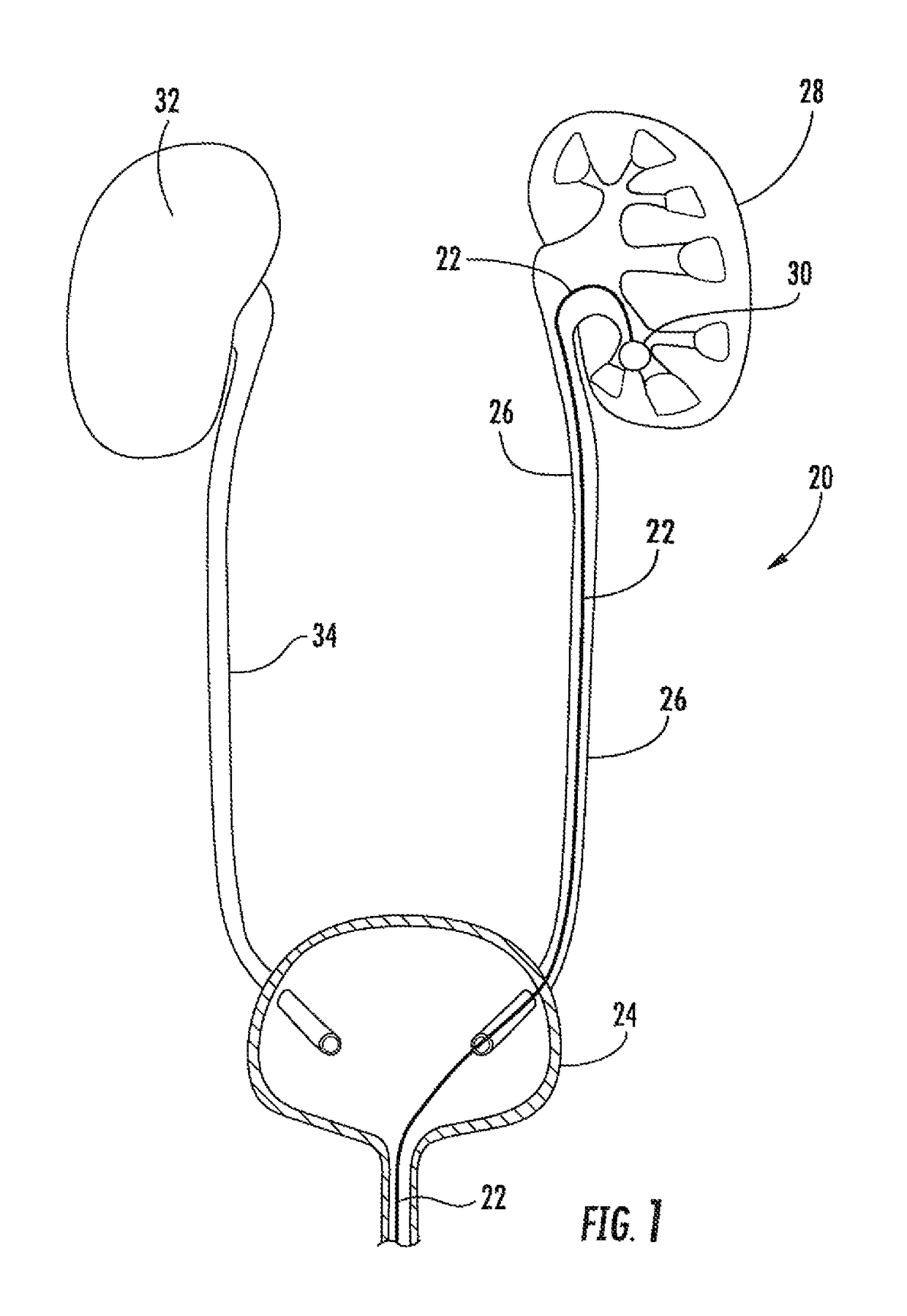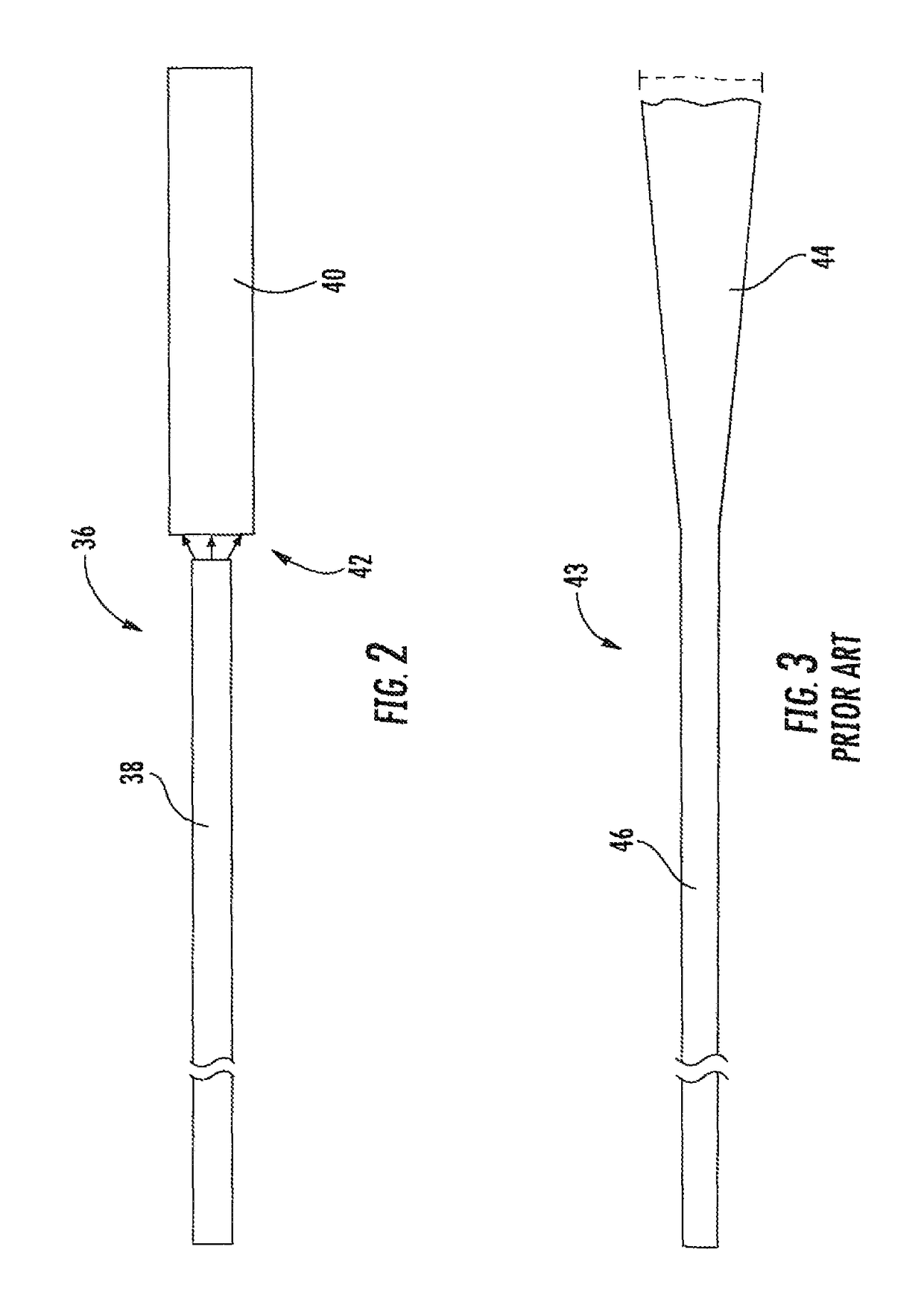System for TFL lithotripsy, including endoscope with detachable and replaceable wave guide and method for use
- Summary
- Abstract
- Description
- Claims
- Application Information
AI Technical Summary
Benefits of technology
Problems solved by technology
Method used
Image
Examples
Embodiment Construction
[0052]The invention will now be described more fully hereinafter with reference to the accompanying drawings in which are illustrated some, but not all, of the concepts of the invention. Indeed, the invention may be embodied in many different forms and should not be construed as limited to the examples set forth herein; rather, the embodiments provided in this disclosure are intended to satisfy applicable legal requirements.
[0053]FIG. 1 illustrates generally at 20 a highly schematic diagrammatic view of an ureteroscope 22 of the invention in the context of its use and inserted through the bladder 24 and ureter 26 into a longitudinally sectioned right kidney 28 and in contact with a kidney stone 30 in the lower pole of the kidney. The left kidney 32 of the pair and corresponding ureter 34 are also illustrated. The ureteroscope 22 may be deflected up to 270° so as to enter the lower pole of the kidney 28 without hindrance and in the substantial absence of damage due to bending that ch...
PUM
 Login to View More
Login to View More Abstract
Description
Claims
Application Information
 Login to View More
Login to View More - R&D
- Intellectual Property
- Life Sciences
- Materials
- Tech Scout
- Unparalleled Data Quality
- Higher Quality Content
- 60% Fewer Hallucinations
Browse by: Latest US Patents, China's latest patents, Technical Efficacy Thesaurus, Application Domain, Technology Topic, Popular Technical Reports.
© 2025 PatSnap. All rights reserved.Legal|Privacy policy|Modern Slavery Act Transparency Statement|Sitemap|About US| Contact US: help@patsnap.com



